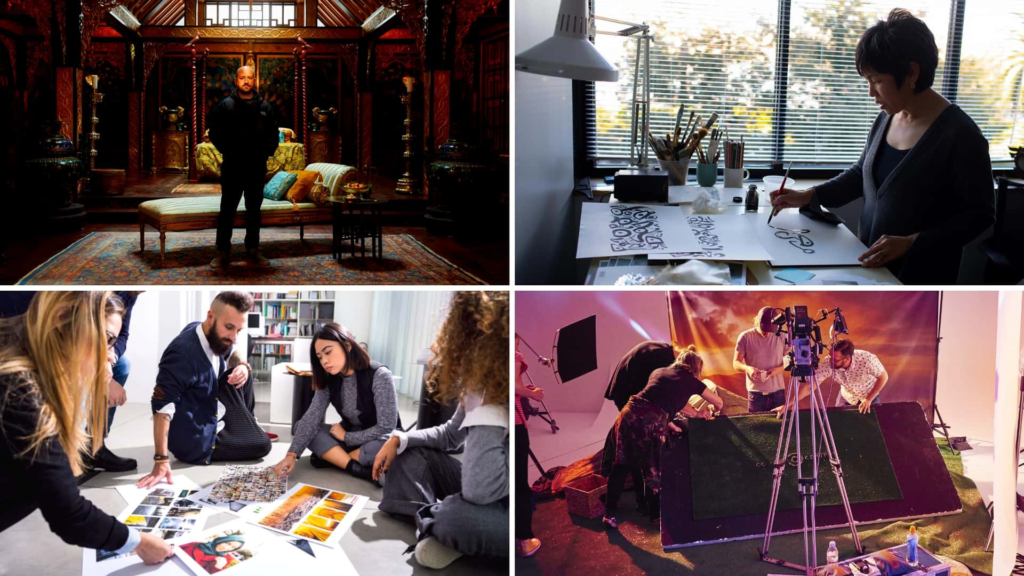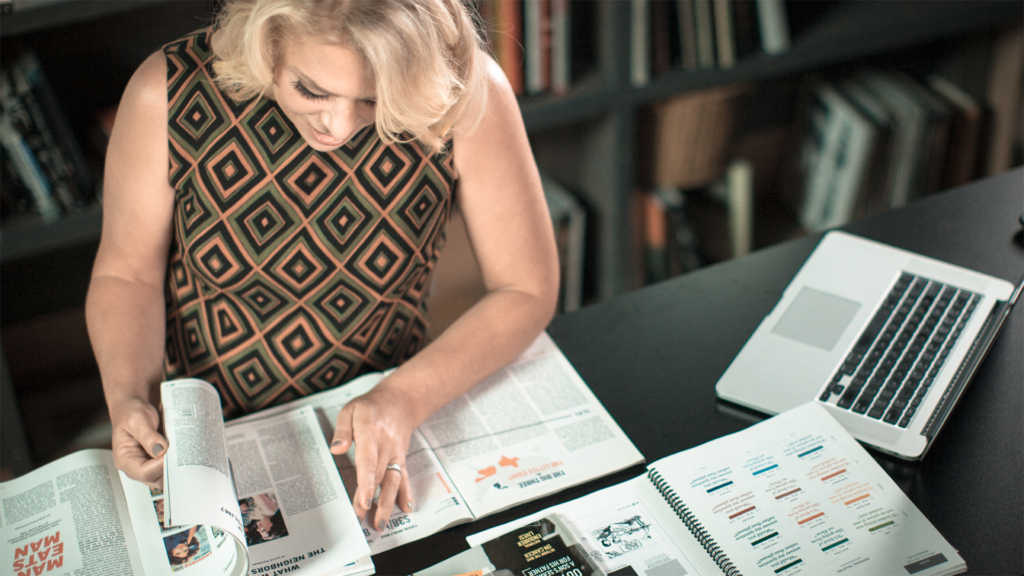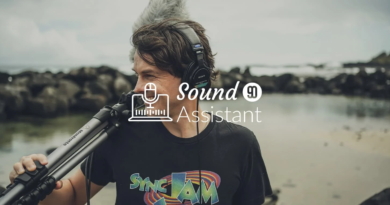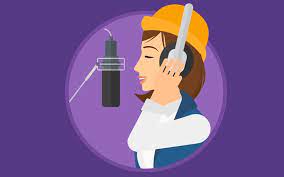Art Director (Animation & Gaming) (1 years diploma course)
Art Director (Animation & Gaming) click here
Brief Job Description: Individuals at this job need to conceptualise the creative
vision and style of the production and ensure all creative elements conform to it.
Personal Attributes: This job requires the individual to have a good overall
understanding the principles of design, colour theory and life drawing. The
individual must be able to develop original and creative ideas and align team
efforts to the overall creative vision.

Qualifications Pack For Art Director(Animation and Gaming)
Keywords /Terms
Description
Attitude poses Attitude poses are used to describe the body language and personality of
the characters
Budget Budget is an estimate of the total cost of production that may include a
break-up of cost components
Character line-up Character line-up is the portrayal of characters side-by-side
Character turnarounds Character turnarounds are used to depict the characters look from all
angles
Clean-up Refining the interim/rough animation
Color keys Color keys are used to depict the mood of the production through hues
and tones
color theory Color theory is the art of combining all the colors in the color wheel to
create specific color combinations
Core Skills/Generic
Skills
Core Skills or Generic Skills are a group of skills that are key to learning and
working in today’s world. These skills are typically needed in any work
environment. In the context of the OS, these include communication
related skills that are applicable to most job roles.
Creative Brief Creative brief is a document that captures the key questions that serve as
a guide for the production including the vision, objective of the project,
target audience, timelines, budgets, milestones, stakeholders etc.
Description Description gives a short summary of the unit content. This would be
helpful to anyone searching on a database to verify that this is the
appropriate OS they are looking for.
Function Function is an activity necessary for achieving the key purpose of the
sector, occupation, or area of work, which can be carried out by a person
or a group of persons. Functions are identified through functional analysis
and form the basis of OS.
Job role Job role defines a unique set of functions that together form a unique
employment opportunity in an organization.

Knowledge and
Understanding
Knowledge and Understanding are statements which together specify the
technical, generic, professional and organizational specific knowledge that
an individual needs in order to perform to the required standard.
Lighting keys Lighting keys are used to depict the mood of the production through
intensity, tine and shadows
Mouth chart Mouth chart is used to portray the emotions and expressions of the
characters
National Occupational
Standards (NOS)
NOS are Occupational Standards which apply uniquely in the Indian
context.
Occupation Occupation is a set of job roles, which perform similar/related set of
functions in an industry
Qualifications Pack For Art Director(Animation and Gaming)

Occupational Standards
(OS)
OS specify the standards of performance an individual must achieve when
carrying out a function in the workplace, together with the knowledge and
understanding they need to meet that standard consistently. Occupational
Standards are applicable both in the Indian and global contexts.
Keywords /Terms Description
NOS National Occupational Standard(s)
QP Qualifications Pack
NSQF National Skill Qualifications Framework
NVEQF National Vocational Education Qualifications Framework
NVQF National Vocational Qualifications Framework
Understanding the script
Description This OS unit is about interpreting the script/ brief/ storyboard/ concept for the
animation and design process
Scope This unit/task covers the following:
Interpret the script/ brief/ storyboard/concept correctly
Coordination with the team to improve understanding
Performance Criteria (PC) w.r.t. the Scope
Element Performance Criteria
Interpret the script/
brief/ storyboard
correctly
To be competent, the user/individual on the job must be able to:
PC1. understand the artistic and communication goals of the script, brief or
storyboard with respect to the individual’s role
PC2. be aware of the intended medium and target audience, and how this may
affect animation processes
PC3. understand the aspects related to the design brief (appearance, complexion,
dressing, moods, personalities, expressions etc.)

PC4. understand the requirements according to the scripts (number, types,
duplicates etc.) based on the individual’s role and its requirements
PC5. understand the specifications for the background and other aspects
(dimensions, operating parameters etc.) based on the individual’s role and its
requirements
PC6. understand the technical needs of the project with respect to the job role
(television, film, gaming, internet, dvd etc.)
PC7. understand the of the concept, which may be self-created, provided in a brief,
or arrived at via discussions with relevant personnel (Director, Executive
Producer etc
Coordination with the
team to improve
understanding
PC8. cordinate with relevant personnel (Business promoters, Producers, Animation
Supervisor etc) to better understand script elements, as appropriate
Knowledge and Understanding (K)
A. Organizational The user/individual on the job needs to know and understand:
KA1. the creative vision and elements of production relating to the job role
KA2. the project pipeline/schedule and timelines with respect to the individual’s role
KA3. the intended purpose/ end-use of the models/ designs that need to be created
by the individual
B. Technical
Knowledge
The user/individual on the job needs to know and understand:
KB1. principles of animation
KB2. how to assess the script and its artistic and communication goals
KB3. how to extract and interpret relevant information regarding the script’s vision
KB4. how to discuss and understand relevant information regarding the concept’s
vision from relevant personnel (art director, producers, animation supervisor
etc)
KB5. how to research and tap into the sources for procuring information/
background material that will enhance understanding of the concept
KB6. applicable copyright norms and intellectual property rights
KB7. applicable health and safety guidelines
Skills (S) (Optional)
A. Core Skills/
Generic Skills
Writing Skills
The user/individual on the job needs to know and understand how to:
SA1. document notes while understanding the brief, requirements and
specifications to refer to during the production process
Reading Skills
The user/individual on the job needs to know and understand how to:
SA2. read and understand the script/ brief/ storyboard
SA3. research links, videos, artwork etc. that can be used as references
Oral Communication (Listening and Speaking skills)
The user/individual on the job needs to know and understand how to:
SA4. understand the central idea and the concept of the script
B. Professional Skills Plan and Organize
The user/individual on the job needs to know and understand how to:
Understanding the script
SB1. analyse the tasks required and estimate the time required for each task, so as
to manage the allotted work and achieve it in given schedules
Problem Solving
The user/individual on the job needs to know and understand how to:
SB2. critically analyse the various elements of the script and the work that may be
required in relevance with the individual’s role
Decision making
The user/individual on the job needs to know and understand how to:
SB3. break down scripts in terms of major and minor characters
.
Customer Centricity
The user/individual on the job needs to know and understand how to:
SB4. check that your own work meets customer/project requirements
Critical Thinking
The user/individual on the job needs to know and understand how to:
SB5. forsee the characters to be developed as per the script updations
Analytical Thinking
The user/individual on the job needs to know and understand how to:
SB6. have a keen eye for details
Conceptualize the creative style
Description This OS unit is about conceptualizing the creative style for production
Scope This unit/task covers the following:
Designing the styling for the production
Approving the creative elements of production
Maintaining continuity and consistency across scenes
Performance Criteria (PC) w.r.t. the Scope
Element Performance Criteria
Designing the styling
for the production
To be competent, the user/individual on the job must be able to:
PC1. understand the story/ concept and conceptualize a range of ideas for the
creative style
PC2. decide the final styling keeping preferences of the target audience in mind
Approving the
creative elements of
production
PC3. approve all creative elements of production produced by team members
within the art department, and ensure they are in sync with the overall creative
vision
Maintaining
continuity and
consistency across
scenes
PC4. ensure that the final look is consistent with the creative look agreed upon, and
continuity is maintained throughout the production
Knowledge and Understanding (K)
A. Organizational
Context
(Knowledge of the
company /
organization and
its processes)
The user/individual on the job needs to know and understand:
KA1. the profile and preferences of the target audience
KA2. the objective and outcomes of the production i.e. commercial success, public
service, information dissemination, audience engagement etc.
KA3. the production budget and timelines
B. Technical
Knowledge
The user/individual on the job needs to know and understand:
KB1. perspective drawings and architectural drawings
KB2. the principles of composition
KB3. the principles of visual design
KB4. basics of indian art and crafts
Conceptualise the creative style
KB5. the trends and sources of reference work-products that closely relate to the
style and technique that needs to be produced
KB6. how to develop original and creative ideas to set the creative look of the
production
KB7. the technical requirements of the medium in which the production will be
exhibited
KB8. how to work on software such as adobe photoshop, gimp, coral painter etc.
KB9. the sources for research and reference material
KB10. how to balance the creative aspects in line with budgets
KB11. applicable copyright norms and intellectual property rights
KB12. applicable health and safety guidelines
Skills (S) (Optional)
A. Core Skills/
Generic Skills
Writing Skills
The user/individual on the job needs to know and understand how to:
SA1. document descriptions on the style, to help present to the Director and
Producer
SA2. document the design brief to be used as a reference document for teammembers
SA3. use basic office tools such as Microsoft Word, Excel and PowerPoint
Reading Skills
The user/individual on the job needs to know and understand how to:
SA4. read and understand the script to determine style requirements
SA5. research the profile and characteristics of the target audience, industry, genre,
region, culture etc.
SA6. keep apprised of trends and work-products that appeal to different types of
audiences
SA7. research links, videos, artwork etc. that can be used as references during the
production process
SA8. research styles and looks for developing the creative style
Oral Communication (Listening and Speaking skills)
The user/individual on the job needs to know and understand how to:
SA9. communicate clearly in english
SA10. describe and discuss the creative style with the Director and Producer and
solicit their feedback
SA11. discuss factors that will have a bearing on the production process with the
Director and Producer
B. Professional Skills Decision Making
The user/individual on the job needs to know and understand how to:
SB1. finalize the color palette based on color gradients that are broadcast safe e.g.
shades that do not smudge/bleed on screen
SB2. finalize the color scheme
SB3. finalize the lighting keys
SB4. finalize the look and feel for the entire show in consultation with the Director
Plan and Organize
The user/individual on the job needs to know and understand how to:
SB5. plan and prioritize work according to requirements and agreed timelines
Problem Solving
The user/individual on the job needs to know and understand how to:
SB6. identify any creative problems that may arise during production and find
solutions to address them
Analytical Thinking
The user/individual on the job needs to know and understand how to:
SB7. envision the impact of the creative look on the production budget, technical
feasibility, creative requirements and process
Critical Thinking
The user/individual on the job needs to know and understand how to:
SB8. appraise the quality of work to ensure it is in line with the expected quality
standards and suggest areas of improvement and re-work, if required
Customer Centricity
SB9. be creative and imaginative as per the changes or updations in the story or
characters
Manage the production process
Unit Code MES/N0512
Unit Title
(Task) Manage the production process
Description This OS unit is about managing the various elements of the production process
Scope This unit/task covers the following:
Determining the elements of the production process
Monitor and manage the production process
Performance Criteria (PC) w.r.t. the Scope
Element Performance Criteria
Determining the
elements of the
production process
To be competent, the user/individual on the job must be able to:
PC1. understand and research various production styles, technologies and
methods, and their corresponding implications on budget, time schedule,
cast and crew requirements
PC2. break-down the production process into a daily/weekly task list and manage
these activities during filming
PC3. identify and allocate the resources as efficiently as possible
PC4. devise workflow processes that the team can follow
Monitor and manage
the production
process
PC5. lead the production unit toward successful completion of their tasks
PC6. track progress against the production schedule and budget
PC7. anticipate potential delays/ budget overruns, escalate these to relevant
departments/superiors and identify ways to minimize them
Knowledge and Understanding (K)
A. Organizational
Context
(Knowledge of the
company /
organization and
its processes)
The user/individual on the job needs to know and understand:
KA1. the different roles and responsibilities within the team, including line
management
KA2. the budget and other constraints that apply to the organization
KA3. the basic policies of the organization that can affect the production process
KA4. the role and contribution of key departments during filming,
interdependencies and reporting structures
Manage the production process
B. Technical
Knowledge
The user/individual on the job needs to know and understand:
KB1. the process for determining the budget and schedule
KB2. processes for identifying production risks and putting in contingency plans
KB3. production processes that may be relevant to the current project
KB4. the kinds of tools and facilities that may be needed
KB5. how to identify the people and skills that might be needed on the project
KB6. the different roles and responsibilities within the team, including
management
KB7. how to check against the production schedule that all tasks have been
delivered, as necessary
KB8. how to liaise with relevant personnel/unit heads to ensure that all elements
required for production and design processes are in place
Skills (S) (Optional)
A. Core Skills/
Generic Skills
Writing Skills
The user/individual on the job needs to know and understand how to:
SA1. document descriptions on the style, to help present to the Director and
Producer
SA2. document design briefs and schedule to be used as a reference document for
team-members, as appropriate
Reading Skills
The user/individual on the job needs to know and understand how to:
SA3. read and understand the production brief or script to determine
requirements
SA4. research links, videos, artwork etc. that can be used as references during the
production process
Oral Communication (Listening and Speaking skills)
The user/individual on the job needs to know and understand how to:
SA5. describe and discuss the production process with the Director, Producer,
relevant department heads etc and solicit their feedback
SA6. discuss factors that will have a bearing on the production process with the
Director and Producer
Plan and Organize
The user/individual on the job needs to know and understand how to:
SB5. how to prepare a work schedule/ sequence of activities to help the
production unit plan their work on a daily basis, as appropriate
SB6. how to build a contingency plan based on knowledge of typical areas of
delays/ overruns and production risks







